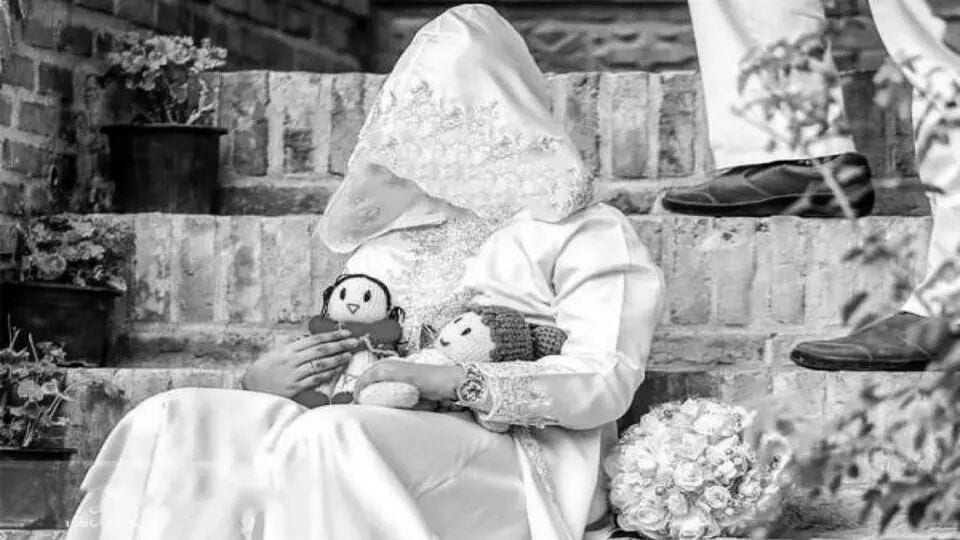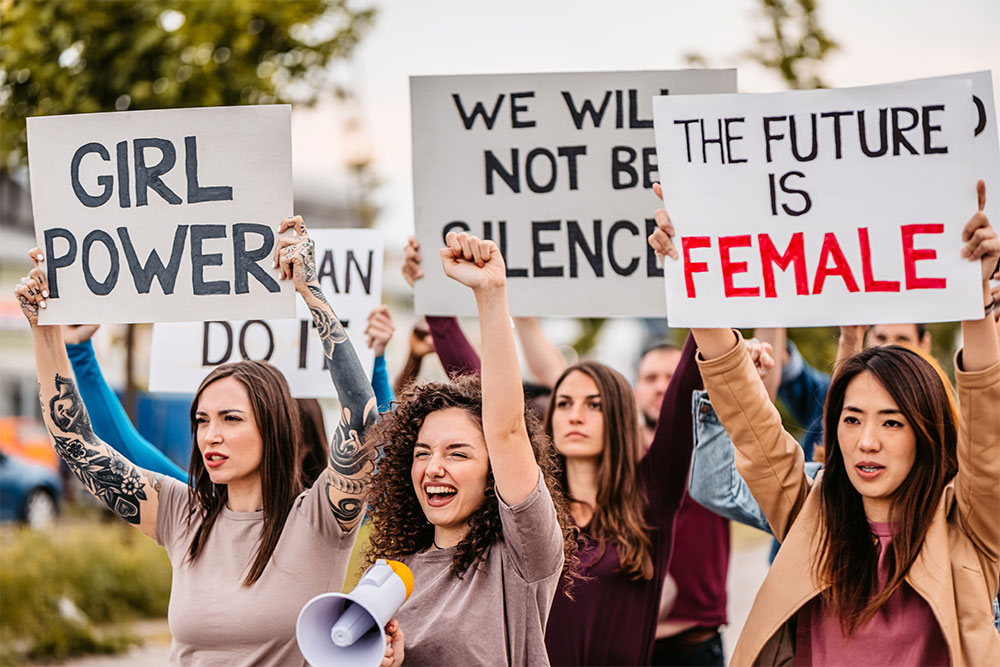
Child marriage – the marriage of individuals under the age of 18 – and its direct consequence, child motherhood (pregnancy and motherhood before 18), remain grave human rights concerns in Iran. Despite certain social advancements, a significant proportion of Iranian girls are still forced into marriage before reaching adulthood. According to official statistics, one in five registered marriages involves individuals under 18, and 5% involve individuals under 15. These alarming figures highlight widespread violations of children’s rights – particularly girls’ rights – as international standards recognize anyone under 18 as a child. Marriage at this age is therefore considered a form of forced marriage and constitutes a violation of the principle of free and full consent. Child marriage robs girls of their right to childhood, education, and healthy development, while exposing them to heightened risks of violence and exploitation. Addressing this pervasive issue demands urgent, coordinated action at both the national and international levels.
- Dimensions of the Child Marriage Issue in Iran
- Legal Age and Existing Gaps: According to the current Iranian Civil Code, the minimum legal age for marriage is 13 for girls and 15 for boys. However, with the permission of a legal guardian and the approval of a competent court, marriage at even younger ages is permitted. As a result, there is effectively no absolute minimum age for marriage in Iran, and the marriage of very young children remains legally possible.
- Prevalence of Child Marriage: Official statistics from the National Organization for Civil Registration and the Statistical Center of Iran show that in 2022 alone, 27,000 marriages of girls under the age of 15 were registered. On average, around 5% of all registered marriages each year involve girls younger than 15. When the age range is extended to under 18, this percentage increases significantly. In recent years, approximately 135,000 marriages of girls under 18 have been recorded annually, representing about one-fifth of all marriages. These figures reveal the alarming scale of child marriage in Iranian society. By contrast, early marriage among boys is far less common, with only about 2% marrying before the age of 18 – underscoring that the overwhelming majority of child spouses are girls.
- Child Motherhood and Teenage Pregnancy: Child marriage often leads to early motherhood. Each year, an average of about 1,450 babies are born to married girls under the age of 15 in Iran. Moreover, teenage mothers under the age of 20 account for roughly 6% of all births nationwide. Most of these young mothers are between 15 and 17 years old and face significant health risks due to their incomplete physical and psychological development.
- Geographic Distribution and High-Risk Provinces: Child marriage occurs throughout the country but is particularly prevalent in marginalized and economically deprived regions. The provinces of Khorasan Razavi, East Azerbaijan, and Sistan and Baluchestan record the highest rates.
- Unregistered Marriages: A significant number of underage marriages occur informally and go unregistered. This lack of official documentation makes it difficult to assess the true scale of the problem, suggesting that the actual number of child marriages is likely far higher than official statistics indicate.
- Shortcomings of Official Statistics and the Hidden Reality of Child Marriage
Iran’s official statistics reflect only a fraction of the real situation, and the actual rate of child marriage is believed to be much higher. The main reason for this discrepancy lies in the widespread occurrence of unregistered marriages, which include the following:
- Temporary Marriages without Registration: In some cases, young girls are entered into temporary marriages (sigheh) with different men without any official registration.
- Traditional and Nomadic Marriages: These marriages are conducted according to local customs and traditions, often among tribal or nomadic groups, and their official registration may be delayed for years.
- Delayed Registration of Underage Marriages: Many families postpone registering the marriage of girls under 13 to avoid legal complications, only formalizing it after the girl reaches the minimum legal age.
- Marriages to Foreigners or Child Sales: In some border provinces, girls are married off to foreign men or sold under the guise of marriage – practices that, in effect, amount to human trafficking.
The discrepancy between official data and the actual prevalence of child marriage severely undermines effective policymaking and intervention efforts. Addressing this hidden dimension requires greater transparency, accurate data collection, and stronger legal enforcement mechanisms.
- Suspension of Child Marriage Statistics Publication
Since 2023, the National Organization for Civil Registration has stopped publishing public statistics on the marriage and pregnancy of underage girls on its website. In response to inquiries from journalists, officials stated, “We have been ordered not to publish any further statistics on child marriage.” This concealment of data appears to have been implemented because, after a brief period of decline, the rates of child marriage and child motherhood began to rise again from 2019 onward. Media outlets had drawn public attention to the increasing number of pregnancies among girls aged 10 to 14 in 2021, prompting authorities to order the suspension of detailed statistical reporting.
- Factors Contributing to Child Marriage and Its Consequences in Iran
- Causes
Economic hardship, traditional customs, and lack of awareness are among the main drivers of child marriage in Iran. In impoverished families, marrying off a young daughter is often viewed as a way to reduce household expenses or gain financial relief. Cultural beliefs that promote early marriage of girls as a means of preserving family honor or the fear of prolonged singleness or celibacy also play a significant role. In addition, legal loopholes – including the absence of a complete prohibition – and weak enforcement mechanisms allow such marriages to be registered or even conducted informally without registration.
- Consequences
Child marriage has numerous harmful effects, including failure to attend school and increased illiteracy among women; high risks of teenage pregnancy and physical injuries during childbirth; psychological harm such as depression and anxiety resulting from a lost childhood; domestic violence and abuse due to the inability of young girls to defend themselves; early divorce or forced polygamy; and the continuation of generational poverty, as marrying and having children at a young age perpetuates the cycle of deprivation. In short, child marriage deprives individuals of their rights to health, education, and childhood, and hinders human development.
- Iran’s Position in Relation to the International Definition of Child Marriage
According to global standards and the UNICEF definition, any marriage involving a person under the age of 18 is considered child marriage. Iran is a signatory to the Convention on the Rights of the Child (CRC), which establishes 18 as the legal threshold for adulthood. However, Iran has not aligned its national laws with this standard, maintaining the reservation of “compliance with Islamic law.” Furthermore, Iran has not ratified the Convention on the Elimination of All Forms of Discrimination against Women (CEDAW), which requires member states to set the minimum marriage age at 18 and prohibit child marriage. As a result, Iran’s domestic laws remain inconsistent with international norms and recommendations – a situation that has drawn repeated criticism from human rights bodies, the European Union, and various international organizations.
In terms of prevalence, Iran ranks in the middle range within the region (excluding unregistered cases): lower than Afghanistan and Pakistan, but higher than Turkey and Malaysia.
Legally, however, Iran maintains one of the lowest minimum marriage ages in the world – 13 years for girls (with even younger marriages possible under certain conditions) – whereas most countries have set the minimum age at 18. While many regional states have raised the legal age of marriage over the past two decades, Iran has resisted such reforms due to religious and cultural considerations, drawing continued criticism from international observers.
- The Need for International and National Pressure to Confront Child Marriage in Iran
Child marriage and child motherhood constitute clear violations of the Convention on the Rights of the Child (CRC) and the principle of free and full consent to marriage. These practices lead to severe social and personal consequences, including school dropouts, intergenerational poverty, early pregnancy, and domestic violence.
- Recommendations to the International Community and International Organizations
- Political Support and Pressure: Prioritize the elimination of child marriage in human rights dialogues with Iran. Publicly condemn the practice in the UN Human Rights Council, and ensure consistent follow-up on Universal Periodic Review (UPR) recommendations to establish 18 as the minimum legal age of marriage without exceptions.
- Engagement of Specialized UN Agencies: Encourage more active involvement of UNICEF, UNFPA, and WHO in providing technical assistance, implementing education and health programs, and integrating Iran into global initiatives aimed at ending child marriage.
- Use of Monitoring Mechanisms: Mobilize UN Special Rapporteurs and thematic working groups to monitor and exert pressure on Iran to reform discriminatory laws and uphold international commitments.
- Role of the European Union and Funding Agencies: Make respect for human rights a condition in negotiations with Iran. Provide financial support for field research, education, and the empowerment of girls, and sustain support for civil society organizations working to combat child marriage.
- Recommended Actions for the Government of the Islamic Republic of Iran
- Legal Reform: Raise the minimum legal age of marriage to 18 without exception. Prohibit temporary marriages involving minors, criminalize child marriage, mandate official registration of all marriages and births, and ratify international conventions protecting the rights of children and women.
- Prevention and Protection: Ensure compulsory and free education through the end of high school; offer financial incentives for low-income families; invest in education and job creation in high-risk regions; implement poverty reduction strategies; launch nationwide awareness campaigns; and provide reproductive health services and adolescent-friendly health centers.
- Judiciary and Law Enforcement: Prevent the issuance of marriage licenses for individuals under 18. Prosecute all illegal marriages promptly. Provide specialized training for judges and law enforcement officers, establish safe houses, and ensure free legal aid and protection for victims.
- Actions for Civil Society and Local Activists
- Public Campaigns and Civic Advocacy: Through field research, whistleblowing, and collective petitions, civil society organizations can bring the issue of child marriage into public debate and policy discourse.
- Teachers and School Counselors: By identifying girls at risk and reporting potential cases, educators can play a crucial preventive role. Raising parents’ awareness about the consequences of early marriage is also essential.
- Local Councils and Community Leaders: Community and religious leaders can help reduce child marriage by forming local support committees, engaging with families, and promoting alternative cultural norms.
- Media and Journalists: Through investigative reporting, publication of victims’ stories, and continuous documentation, media professionals can break the taboo surrounding child marriage and raise public awareness.
Finally, promoting a culture of dialogue and awareness through social media, educational videos, and online campaigns is vital. Such efforts form part of a long-term cultural process aimed at transforming societal attitudes toward child marriage.

